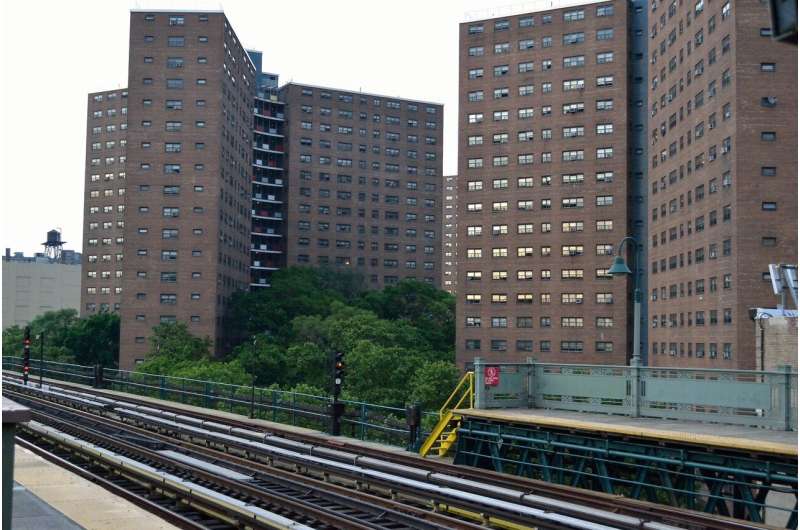Historically redlined neighborhoods burdened by excess oil and gas wells

Across the United States, historically redlined neighborhoods that scored lowest in racially discriminatory maps drawn by the government-sponsored Home-Owners Loan Corporation (HOLC) in the 1930s had twice the density of oil and gas wells than comparable neighborhoods that scored highest. Wells likely contribute to disproportionate pollution and related health problems in redlined neighborhoods.
The study by researchers at Columbia University Mailman School of Public Health, University of California Berkeley, and University of California San Francisco is published in the Journal of Exposure Science & Environmental Epidemiology.
Oil and gas wells expose residents to air and water pollution, noise, and other sources of stress that can increase the risk of many types of disease: cardiovascular disease, impaired lung function, anxiety, depression, preterm birth, and impaired fetal growth. An estimated 17 million Americans live within one mile of at least one active oil or gas well.
"We already know that people living in historically redlined neighborhoods have elevated risk of asthma, cardiovascular disease, preterm birth, and low birthweight. Our study helps explain one driver of these health disparities," says first author David Gonzalez, Ph.D., a President's Postdoctoral Fellow at UC Berkeley. "Racially marginalized people have disproportionately high exposure to oil and gas-related contaminants, and we're seeing that these 80-year-old racist policies related to housing segregation and mortgage risk played a role."
"Our study adds to the evidence that structural racism in federal policy is associated with the disproportionate siting of oil and gas wells in marginalized neighborhoods," says senior author Joan Casey, Ph.D., assistant professor of environmental health sciences at Columbia Mailman School. "These exposure disparities have implications for community environmental health, as the presence of active and inactive wells contribute to ongoing air pollution."
An earlier paper by Casey found that historically redlined neighborhoods are more likely to lack green space today. Other research has linked historically red-lined neighborhoods have persistent social inequities.
In the current study, researchers assessed exposure to oil and gas wells among HOLC-graded neighborhoods in 33 cities from 13 states where urban oil and gas wells were drilled and operated. Among the 17 cities for which 1940 census data were available, they compared neighborhoods that were similar on observed 1940 sociodemographic characteristics but that received different grades.
They found that number and density of oil and gas wells were linked to the HOLC score. These include wells in operation before and after the redlining maps were drawn. Two of the redlined neighborhoods with the most wells were Signal Hill and Wilmington, both in Los Angeles.
The researchers obtained digitized HOLC maps from the Mapping Inequality project at the University of Richmond. They obtained census-tract level sociodemographic data from the 1940 census from the National Historical Geographic Information System from Integrated Public Use Microdata Series. Data on oil and gas wells dating back to 1898 were obtained from Enverus Drillinglnfo, a data aggregation service.
Over the past century, redlining has been perpetuated by both private businesses and government agencies, including the HOLC, which sought to prevent mortgage foreclosures during the Great Depression. In appraising mortgage risk, HOLC staff considered neighborhood-level characteristics that included home values, whether there were industrial facilities and the presence of racially marginalized populations such as Black people and immigrants. This study showed that redlining is linked to oil and gas well exposure, potentially explaining part of the health disparities that exist today.
More information: David J. X. Gonzalez et al, Historic redlining and the siting of oil and gas wells in the United States, Journal of Exposure Science & Environmental Epidemiology (2022). DOI: 10.1038/s41370-022-00434-9
Anthony Nardone et al, Redlines and Greenspace: The Relationship between Historical Redlining and 2010 Greenspace across the United States, Environmental Health Perspectives (2021). DOI: 10.1289/EHP7495
Journal information: Environmental Health Perspectives




















